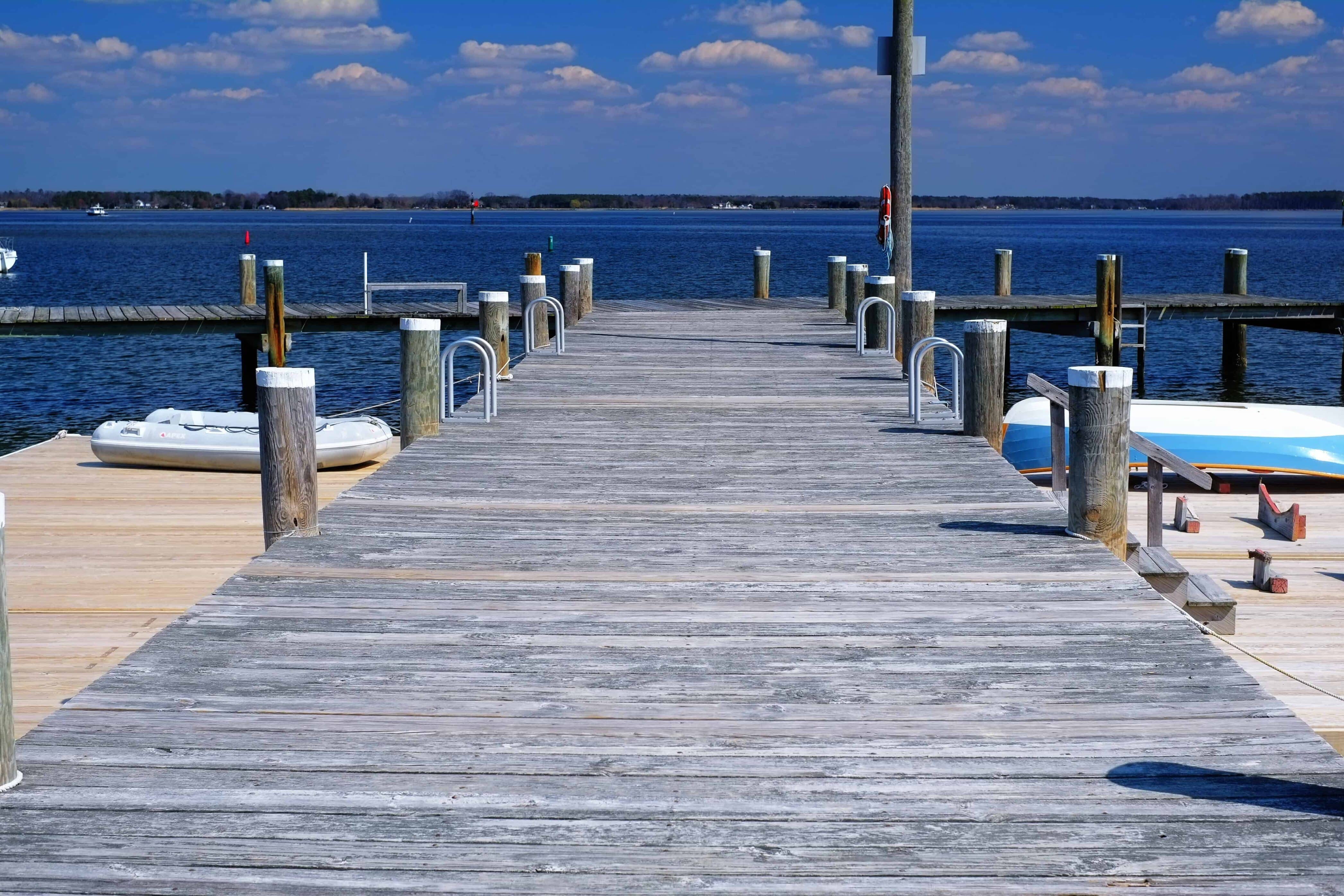
Everything You Need To Know About Dock Maintenance
Dock maintenance can be easy to overlook. After all, people tend to focus more on what is happening around the dock than the dock itself. However, poor boat dock maintenance can create a safety hazard and lead to expensive repairs.
Whether you manage a hundred docks for a commercial marina or just one residential dock for the family boat, maintaining your investment is essential. Prolonging the life of your dock is surprisingly easy with the right know-how and supplies. Read on to learn how to keep your dock looking like new for years to come.
Why Dock Maintenance Is Important
Constant exposure to wind, water, sunshine, pests, and other hazards can damage your dock. Wood docks can rot, warp, chip, crack, and splinter over time. Metal parts may rust. This deterioration can weaken the structural integrity of your dock.
A damaged dock may become unstable or even collapse. Damaged boards, uneven surfaces, or loose nails could cause trips and falls. Deteriorating materials could also damage your boat, making loading and unloading more difficult.
Additionally, damaged materials impact the appearance of your dock, which can decrease the resale value of your home. Unchecked deterioration may lead to expensive repairs or even the need to replace your dock completely. Maintaining your dock can avoid this expense.
Dock Maintenance Requirements for Different Materials
All docks require some type of maintenance. However, the materials your dock contains affect the kind of maintenance it needs.
Pressure-Treated Wood
Pressure-treated wood is cost-effective but requires the most work. Prolong the life of your pressure-treated dock by choosing certified marine-grade premium kiln-dried wood.
The chemicals used to pressure treat wood make it more susceptible to rot and decay. Seal pressure-treated wood to keep out moisture and prevent rot.
Ipe & Other Hardwoods
Premium Ipe lumber is one of the most beautiful and durable decking options. The material is dense and resistant to water and bugs, making it easy to care for.
However, without maintenance, the color can fade to a silver gray. Clean and oil the surface regularly to maintain the dark, rich colors of a hardwood dock.
Composite Docks
Composite decking consists of a combination of wood, natural fibers, and plastics, and it is nearly as moisture- and insect-resistant as Ipe.
Top brands like Trex make composite decking with a special resin capping that protects the structure underneath from mildew and decay. Because composite materials don’t suffer from the same problems as wood, they are typically the easiest to maintain.

Cleaning Your Dock
Cleaning your dock thoroughly at least once per year is an integral part of proper dock maintenance. Be sure to clear out gaps, scrub away stains, and carefully inspect the dock for signs of wear and tear.
Because pressure washers can damage wood docks, it is best to use a regular garden hose. If you use a pressure washer, use a fan tip nozzle to reduce the force of the water. Hold the tip about one foot away from the dock and keep the pressure at or below 600 PSI.
Sanding and Staining Your Dock
If you use a pressure washer to clean your dock or you plan to stain it, you need to sand it. Sanding smooths any wood the pressure washer damaged and prepares the wood to hold the stain.
How often you should stain a dock depends on the quality of the stain you use. Staining your dock after your annual cleaning will protect the wood and keep your dock looking nice. The fall and winter months are the best time to stain your dock because the water levels are lower, allowing you to access more of the structure.
No need to paint or stain composite deck boards– in fact, you really shouldn’t with the newer products, or you’ll damage it. Typically, you can safely paint and stain older, uncapped composite deck boards; however, modern composite boards usually have polymer caps that you shouldn’t paint or stain. Always consult the manufacturer before painting or staining any composite decking.
How Often Should I Seal My Dock?
Sealants provide extra protection against water, mildew, and pests. Seal your dock at least once every few years, and be sure to apply sealant around the joints to protect its structural integrity.
Keeping Your Dock Maintenance Environmentally Friendly
Protecting the waterways will help you enjoy your boat and dock for years to come. If you build a new dock, place it as far from wildlife habitats as possible and build it as wide as you can.
Wider docks have steadier motion and don’t impact the level of mineral deposits on the water or shoreline as severely. Choose eco-friendly cleaning products, or make your own.
Use a solution of three parts olive oil to one part white vinegar to remove tough stains and smaller messes. A paste of water and baking soda can remove oil stains.
How To Fix Common Dock Problems
Give your dock a visual or professional inspection as part of your regular dock maintenance. Check for splinters, cracks, warped planks, damaged handrails, and rotted wood. Examine your nails and bolts. Some corrosion is normal, but too much can compromise the safety and functionality of your dock.
Rot
Even with the best treatment and care, wood that frequently contacts salt water will eventually show signs of rot. Luckily, this is easy to fix if you catch it early. Replace small areas of rotted wood with new lumber to avoid a costly problem in the future.
Rust Stains
If your dock uses a combination of wood and metal, you need to watch for rust. There are many home remedies for rust stains, such as white vinegar or dish soap. For more stubborn stains, you may need to use commercial rust removal products.
Warping and Bending
Inspect the structure of your dock for signs of bending and warping at the start of each season. It’s possible to flatten warped boards using a bar clamp, but it’s usually easier to replace the affected boards.
Discoloration
If your beautiful reddish-brown hardwood deck has turned gray, restaining it will return it to its original condition. Make sure you wipe away excess oil after staining.
Signs You Need To Replace Your Dock
Regular dock maintenance will help your dock last many years, but all docks need replacement eventually. Learning to tell the difference between a repairable dock and one that needs replacement can save you money and prevent serious injuries.
Excessive Rot or Rust
You can treat small areas of rot and rust. If the problem is widespread, it is time to replace your dock.
Foundation Damage
A damaged foundation can make your dock unstable and dangerous. A good rule of thumb is that if you can’t set the dock’s posts at least 4 feet in the ground, it isn’t safe to use anymore.
Get the Dock Maintenance Supplies You Need at Decks & Docks
Decks & Docks has all the dock maintenance supplies you need when you need them. Stop by and pick up a gallon of Penofin Hardwood Formula to protect your Ipe dock or some Spa-N-Deck from Flood to preserve your PT wood. Whether you need a treatment solution or advice on how to take care of a dock or deck, the pros at Decks & Docks can help. Swing by one of our coastal locations or contact us to learn more.
- About the Author
- Latest Posts
James Hertler has served professional builders and homeowners on the Jersey Shore since 2006. With decades of industry experience, his team provides deep product knowledge and specialized service. Professional deck builders and marine contractors will find that they understand the business and work hard to make every job run smoothly. Homeowners working independently or with a contractor will find him a great resource from planning to delivery. All of their customers will find that James goes the extra mile to help turn a construction project into a beautiful outdoor living space.
